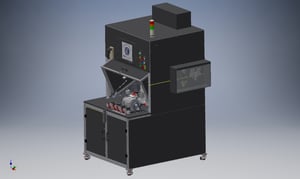+1 (317) 804-2330 | info@ballsystems.com | Blog
+1 (317) 804-2330 | info@ballsystems.com | Blog

A multi-national, automotive supplier required design and development of a new heavy and light-duty alternator tester. The tester needed to have a scalable and adaptable architecture that would enable testing of more than 125 Device Under Test (DUT) models with only minor adjustment. Due to struggles with a prior test system supplier that provided an unscalable, closed platform design and software environment, our customer wanted to ensure the new system was based on best in class Commercial Off the Shelf (COTS) components. They also wanted to ensure the tester was designed based on an open architecture that included delivery of both hardware and software Intellectual Property (IP) including source code to the customer.
Our team designed, built, and validated a single alternator end of line manufacturing tester capable of testing the array of DUTs. To ensure the new custom test system is scalable for future needs, we delivered the source code and all original documents which enables our customer to modify the test sequences as needed and to adapt the platform to new product needs in the future.

We worked closely with our customer’s team to ensure a successful and on-time project completion. The solution we provided to our customer is not only less expensive overall than the previous closed architecture solution, but also less expensive to maintain and train users on.
System Functionality:
Tests:
To learn more about this project, check out our case study.

Ball Systems designs, develops, and delivers custom test systems and produces comprehensive build-to-print systems for companies creating or manufacturing critical electronic or electro-mechanical components for automotive, aerospace and defense and consumer appliance applications.
Blog Comments